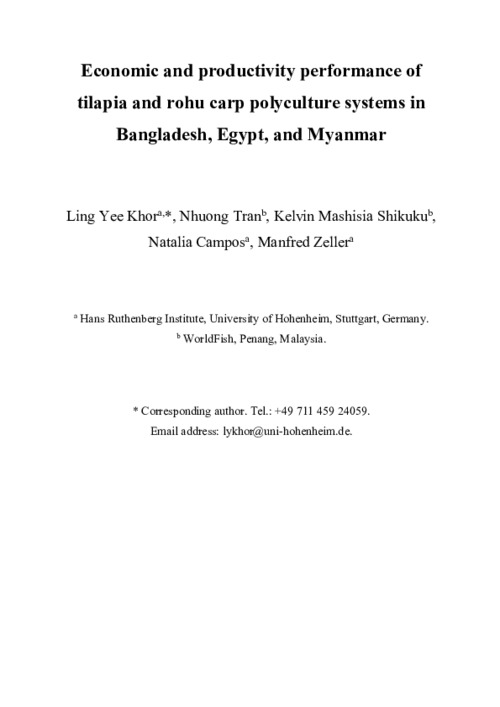Economic and productivity performance of tilapia and rohu carp polyculture systems in Bangladesh, Egypt, and Myanmar

Polyculture of fish is a common pond-based aquaculture system practiced by small-scale producers in developing countries to improve input use efficiency, and increase productivity and profits. We conduct a cross-country comparison to examine whether the economic and productivity benefits are seen in data of 1,651 ponds from 1,307 fish farming households in three countries: Bangladesh, Egypt, and Myanmar. Among these ponds, polyculture is the prevailing system, as it is practiced in 66% of them. The surveys of these households were completed in 2019. We use propensity score matching to match the ponds based on household and pond characteristics, so that ponds are compared with other similar ponds. Results indicate that the aquaculture revenue and profit of polyculture ponds are higher than those of monoculture ponds by US$4,993 and US$6,985, respectively, per hectare per cycle. The increase is also observed in the systems of tilapia polyculture and rohu polyculture, which are the two most common systems among the sampled farmers. The increase for rohu polyculture at US$7,992 in revenue and US$9,366 in profit per hectare per cycle is higher than the increase for tilapia polyculture at US$4,649 and US$6,649, respectively. However, tilapia polyculture farmers save more harvested fish for household consumption, by 72 kg per cycle, than farmers of other systems. The higher profits for general polyculture, tilapia polyculture, and rohu polyculture are statistically significant after controlling for country-level factors and have high critical value of gamma in the Rosenbaum sensitivity analysis, indicating that these results are robust. This analysis from fish farming households complements the results from pond experiments and can help to inform decision-making in aquaculture policy and training.
Permalink
Date Available
Type
Publisher
Countries
Copyright
CC-BY-NC-4.0
Research Themes
Language